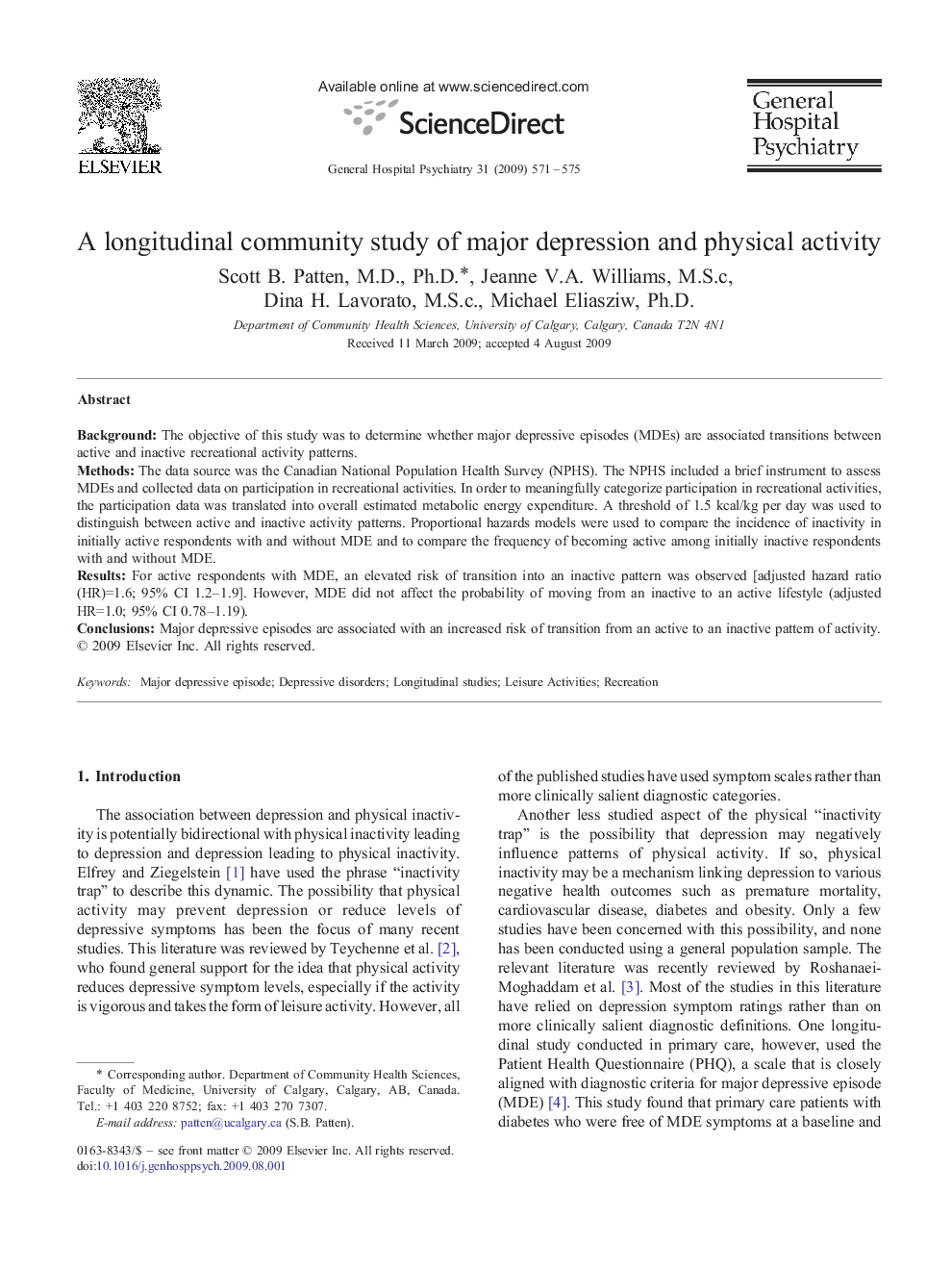| Article ID | Journal | Published Year | Pages | File Type |
|---|---|---|---|---|
| 3238114 | General Hospital Psychiatry | 2009 | 5 Pages |
BackgroundThe objective of this study was to determine whether major depressive episodes (MDEs) are associated transitions between active and inactive recreational activity patterns.MethodsThe data source was the Canadian National Population Health Survey (NPHS). The NPHS included a brief instrument to assess MDEs and collected data on participation in recreational activities. In order to meaningfully categorize participation in recreational activities, the participation data was translated into overall estimated metabolic energy expenditure. A threshold of 1.5 kcal/kg per day was used to distinguish between active and inactive activity patterns. Proportional hazards models were used to compare the incidence of inactivity in initially active respondents with and without MDE and to compare the frequency of becoming active among initially inactive respondents with and without MDE.ResultsFor active respondents with MDE, an elevated risk of transition into an inactive pattern was observed [adjusted hazard ratio (HR)=1.6; 95% CI 1.2–1.9]. However, MDE did not affect the probability of moving from an inactive to an active lifestyle (adjusted HR=1.0; 95% CI 0.78–1.19).ConclusionsMajor depressive episodes are associated with an increased risk of transition from an active to an inactive pattern of activity.
